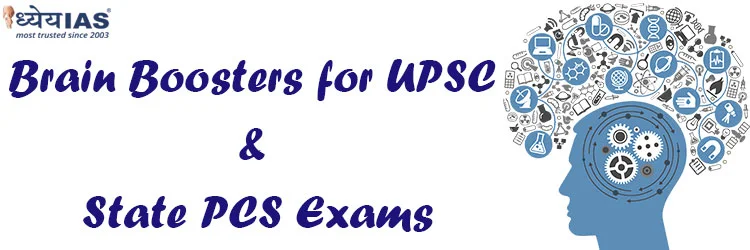Current Affairs Brain Booster for UPSC & State PCS Examination
Topic: Need for Fake News Countering Mechanism

Why in News?
- Recently, the Supreme Court has asked the Centre to explain its “mechanism” against fake news and bigotry on air, and to create one if it did not already exist.
Background
- The apex court made the above observation after an affidavit was submitted before it by the secretary in the Ministry of Information and Broadcasting Amit Khare in the matter of Jamiat Ulama-i-Hind and others versus Union of India and another.
- As Solicitor General Tushar Mehta submitted that the Central government has enough powers to regulate content of TV channels but is mindful that the right to free speech as a fundamental right is available to the media, the court asked him to create a mechanism for addressing grievances related to fake news if none existed at present.
- The court also asked the Centre to submit a response within three weeks about the mechanism it possessed under the Cable TV Network Regulation Act to stop fake news and what action it has taken.
MeitY Response
- In its response, the Ministry of Information and Broadcasting (MeitY) submitted through the affidavit that the Central government has issued several directions to prevent dissemination of fake news leading to abrogation of communal harmony and that advisories were also sent out by the MIB to the channels from time to time to adhere to the programme code.
- The ministry charged that “the petition is based upon vague assertions based upon certain `fact checking news reports’ to contend that entire media is perpetrating communal harmony and hatred towards one particular community” and was seeking “wide ranging, vague, unrestrained pre-telecast restriction that too on the basis of unverifiable reports.”
- The affidavit also mentioned how the MeitY, which has the power to block information under Section 69 A of the IT Act 2000 and Information Technology (Procedure and Safeguards for Blocking for Access of Information by Public) Rules, 2009, has already issued advisories categorically informing the intermediaries to remove false news or misinformation concerning COVID-19 which are likely to create panic among public and disturb the public order and communal harmony.
Laws Regarding Fake News
- Section 66D of Information Technology Act- Punishment for cheating by personation by using computer resource.
- Section 54 of the Disaster Management Act- Punishment for false warning.
- Section 505(1) of Indian Penal Code (IPC), 1860- Punishment for making, publishing or circulating any statement, rumour or report which may cause fear for an alarm to the public, or to any section of the public.
- Section 153 of IPC- Wantonly giving provocation with intent to cause riot—if rioting be committed—if not committed.
- Section 499 and 500 of IPC- Defamation and punishment for defamation.
Other Provisions
- One can file a complaint with the News Broadcasters Association (NBA) which represents the private television news and current affairs broadcasters.
- Indian Broadcast Foundation (IBF) is a body where one can file complaints against contents aired by 24*7 channels for promoting smoking, abuse, or any violent action by online or offline.
- Broadcasting Content Complaint Council (BCCC) deals with complaints relating to the TV content which is objective or fake news, where the Broadcaster incites communal hatred, encourage violence against woman, child abuse or promotes consumption of drugs.
- The Press Council of India (statuary body) can warn newspaper agencies, the news agency, the editor or the journalist or disapprove the conduct of the editor or the journalist if it finds that a newspaper or a news agency has violated journalistic ethics.
- The issue with these bodies is that they don’t have detrimental penalising powers.









